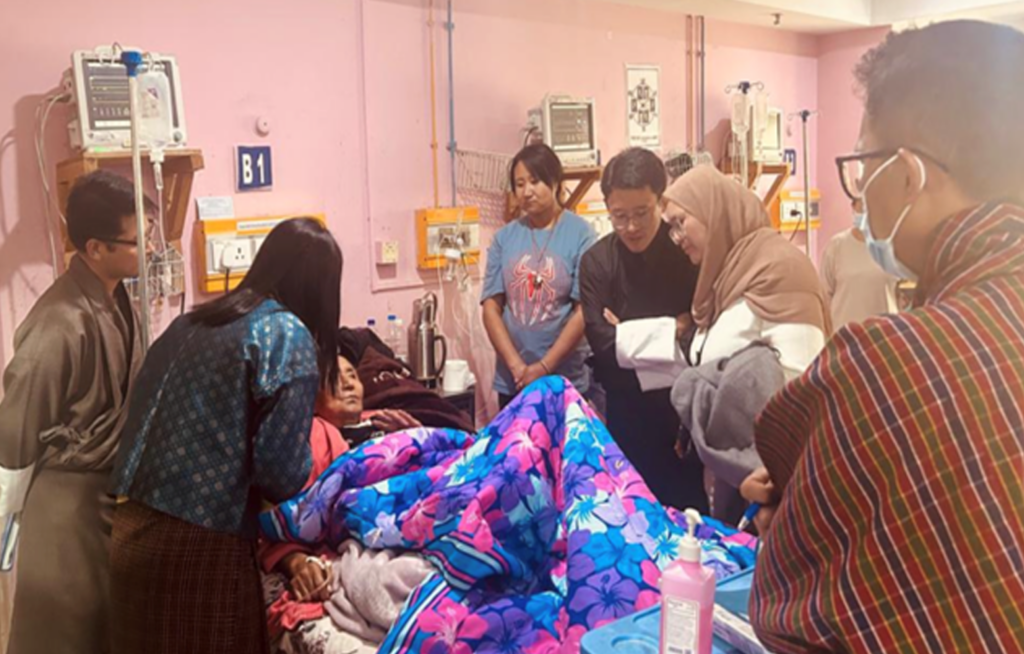Reflection #1:
e started off the ice breaking session in a group of 10, to see who can build the tallest giraffe using newspaper in 10 minutes.
Our group used the cellotape to stick the giraffe to the ceiling to prevent it from falling down. Another group put the giraffe on the floor so that they can make the neck higher.
The first day of attending the APHN-Lien Collaborative Training was on 10/4/2022. The ice breaking session was fun, competitive and showed us the importance of teamwork in order to win the prize. We continued with lectures, case discussions, sharing sessions, hospital bedside teaching and fast forward one year later, I found that I have grown so much, in terms of knowledge in managing palliative care patients and the confidence to provide end of life care.
“How people die remains in the memory of those who live on”
– from Dame Cicely Saunders.
This exemplifies the core objective of palliative care, which is to improve the quality of life for individuals nearing the end of life. Our initial palliative care patient from Asajaya had metastatic pancreatic cancer. The patient’s daughter shared with us a poignant memory of her mother, who succumbed to eye cancer many years ago. She vividly recounted the distressing experience of her mother enduring excruciating pain as if her eye was constantly pecked by a chicken’s beak. In contrast, her father, who was discharged from the palliative ward to receive community care, was able to experience a pain-free and comfortable transition until his last breath.
We are very thankful to APHN-Lien Collaborative Training for the opportunity to learn about palliative care from the experts around the globe. Besides opening our minds about how much we can do for the patients, it also make us appreciate how much difference we can make to the community by providing good palliative care.
I enjoyed the practical session, bedside teachings, case discussions and presentation which empower us to provide better palliative care for patients, and these also consolidated our knowledge in many other ways. Thank you APHN-Lien Collaborative for Palliative Care!
Written by: Dr Sii Kia Miang, KK Asajaya, Malaysia
Reflection #2:
I got to know about palliative care during my family medicine master training. The APHN-Lien Collaborative Training has given me another chance to be trained and be more involved in providing palliative care to the community as they have reached an agreement with the Sarawak government to expand community palliative care services in the state.
Across the duration of three modules, we have all been carefully tutored with supplementation of a lot of hands-on practices in problem solving, bed-side examination and group role play for communication skills. The unique part of the training has been its constant evolution in information variation and delivering during each module which enhanced and enriched our learning experience.
Palliative care teaching by the APHN-Lien Collaborative programme has been the best learning platform I have experienced after master training. The teaching has enabled me to run a successful community palliative care services and in-patient ward in Klinik Kesihatan Song.
Written by: Dr Sii Kia Miang, KK Asajaya, Malaysia
This project is a Lien Collaborative for Palliative Care initiative to build capacity in developing countries in Asia. The Lien Collaborative for Palliative Care was co-developed by the Asia Pacific Hospice Palliative Care Network (APHN) and the Lien Foundation.









